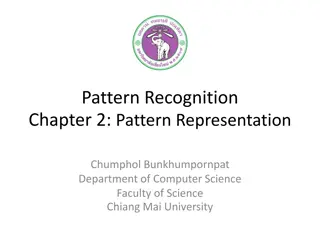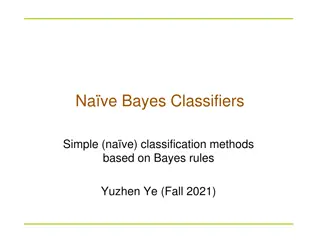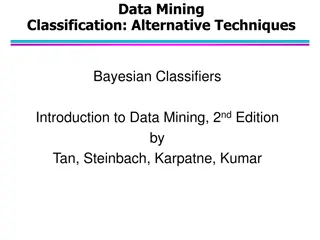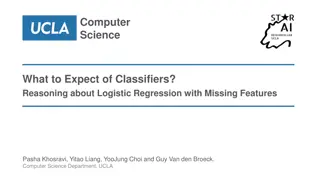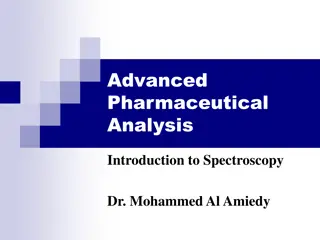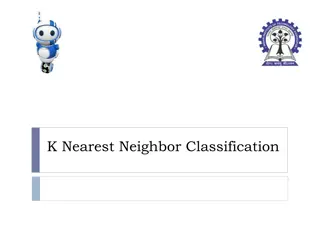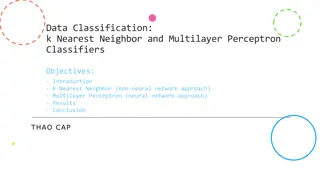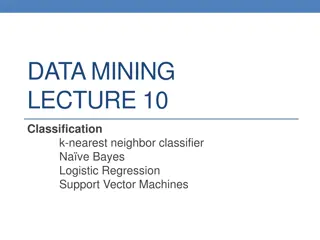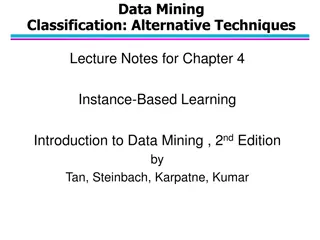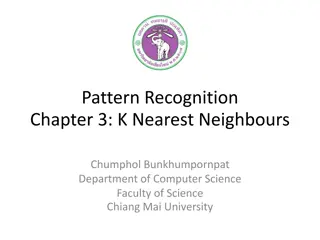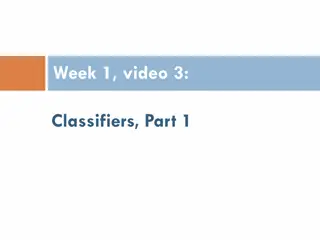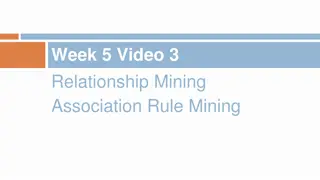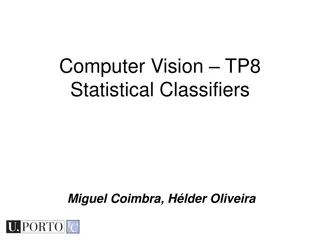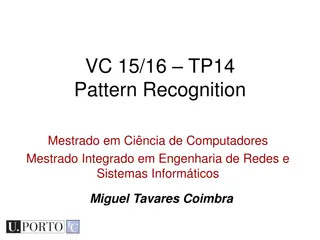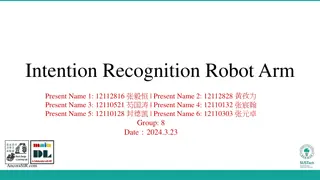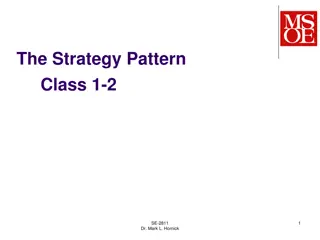Understanding Pattern Recognition, Association Rules, and Rule-based Classifiers
Delve into the world of Pattern Recognition, Market Basket Analysis, and Association Rules with a focus on the Apriori Algorithm. Explore the significance of itemsets and frequent itemsets in data mining techniques, uncovering associations among items and their occurrences.
Download Presentation

Please find below an Image/Link to download the presentation.
The content on the website is provided AS IS for your information and personal use only. It may not be sold, licensed, or shared on other websites without obtaining consent from the author. Download presentation by click this link. If you encounter any issues during the download, it is possible that the publisher has removed the file from their server.
E N D
Presentation Transcript
Pattern Recognition Association Rules and Rule-based Classifiers Chumphol Bunkhumpornpat Department of Computer Science Faculty of Science Chiang Mai University
Outline Market Basket Analysis Association Rules Apriori Algorithm Rule-based Classifiers 2 204453: Pattern Recognition
Market Basket Analysis 4 204453: Pattern Recognition
Itemset A set of items together is called an itemset. If any itemset has k-items it is called a k-itemset. An itemset that occurs frequently is called a frequent itemset. frequent itemset mining is a data mining technique to identify the items that often occur together. 16 204453: Pattern Recognition
Frequent Itemset A set of items is called frequent if it satisfies a minimum threshold value for support and confidence. Support shows transactions with items purchased together in a single transaction. Confidence shows transactions where the items are purchased one after the other. 17 204453: Pattern Recognition
computer antivirus [support = 2%, confidence = 60%] A support of 2% for this rule means that 2% of all the transactions under analysis show that computer and antivirus software are purchased together. A confidence of 60% means that 60% of the customers who purchased a computer also bought the software. 18 204453: Pattern Recognition
Dataset 20 204453: Pattern Recognition
Apriori Algorithm 1. Join Step: This step generates (K+1) itemset from K-itemsets by joining each item with itself. 2. Prune Step: This step scans the count of each item in the database. If the candidate item does not meet minimum support, then it is regarded as infrequent and thus it is removed. This step is performed to reduce the size of the candidate itemsets. 21 204453: Pattern Recognition
Apriori Algorithm: minimum support count = 2 24 204453: Pattern Recognition
Generating Association Rules {I1,I2} I5, {I1,I5} I2, {I2,I5} I1, I1 {I2,I5} I2 {I1,I5} I5 {I1,I2} confidence = 2/4 = 50% confidence = 2/2 = 100% confidence = 2/2 = 100% confidence = 2/6 = 33% confidence = 2/7 = 29% confidence = 2/2 = 100% 25 204453: Pattern Recognition
0R = Zero Rule is the simplest classification method which relies on the target ignores all predictors ZeroR classifier simply predicts the majority category (class) no predictability power in ZeroR it is useful for determining a baseline performance as a benchmark for other classification methods. 0R Classifier 28 204453: Pattern Recognition
"Play Golf = Yes" is the ZeroR model for the following dataset with an accuracy of 0.64 29 204453: Pattern Recognition
1R = "One Rule generates one rule for each predictor in the data selects the rule with the smallest total error as its "one rule create a rule for a predictor, construct a frequency table for each predictor against the target. OneR produces rules only slightly less accurate than state-of-the-art classification algorithms while producing rules that are simple for humans to interpret. 1R Classifier 30 204453: Pattern Recognition
Consisting of a one-level decision tree it is a decision tree with one internal node (the root) which is immediately connected to the terminal nodes (its leaves) makes a prediction based on the value of just a single input feature Sometimes they are also called 1- rules Decision Stump 33 204453: Pattern Recognition
Decision Stump 204453: Pattern Recognition 34
JRIP in Weka 204453: Pattern Recognition 35
Reference Han, J., Kamber, M., Pei, J.: Data Mining: Concepts and Techniques, 3rd Edition. Morgan Kaufman (2011) https://www.softwaretestinghelp.com/apriori- algorithm/ 36 204453: Pattern Recognition


